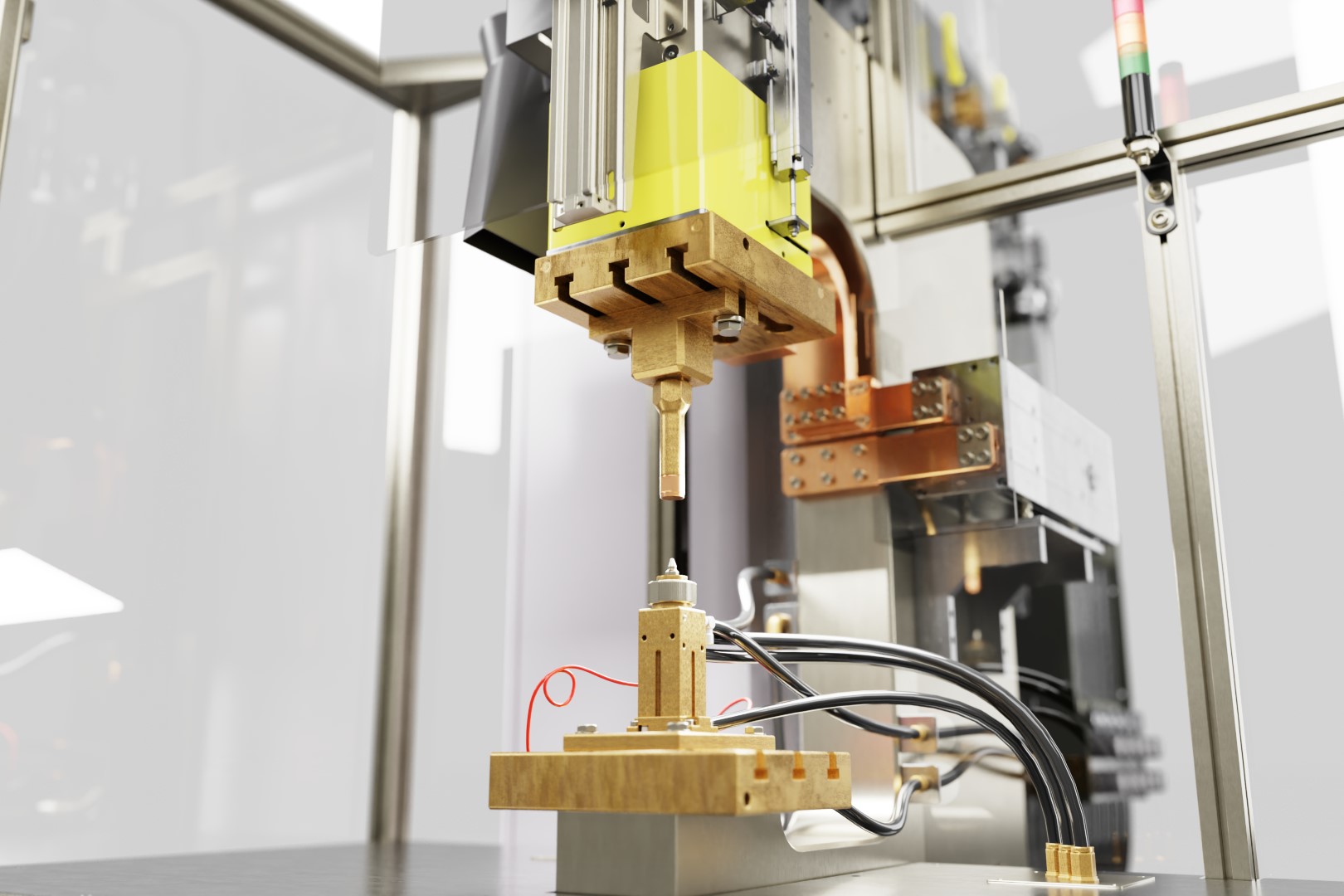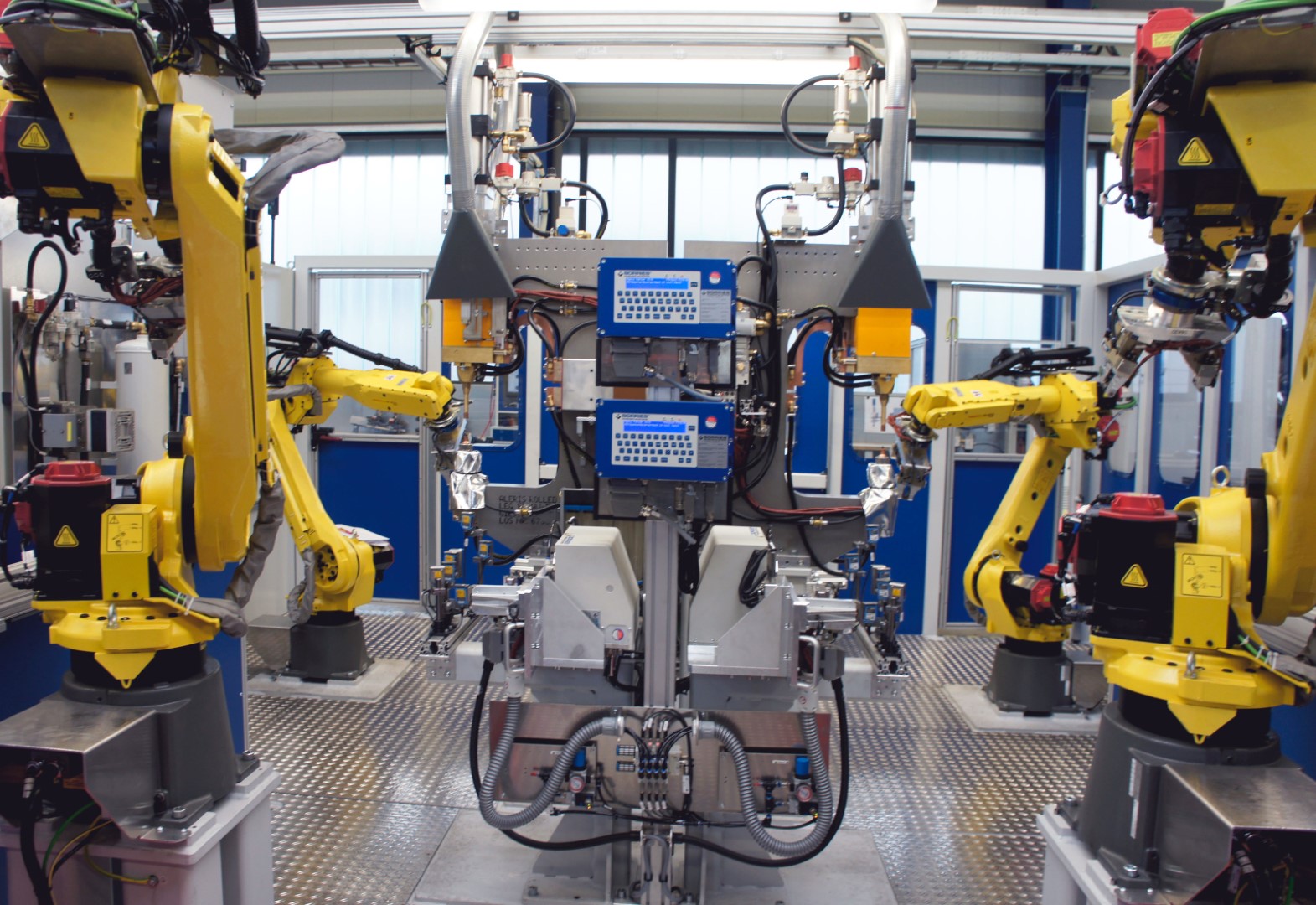Projection Welding: A Process with Many Advantages
Projection welding is one of the most proven techniques in resistance welding – especially when precise, durable, and automatable joints are required. Whether in the automotive industry, mechanical engineering, or for safety-critical components: when sheets, nuts, or studs need to be joined quickly and reliably, projection welding is often the first choice.
The advantage lies in the detail: thanks to the targeted current flow through the so-called “projection,” the weld is created exactly where it’s needed – with high repeatability, energy efficiency, and minimal heat input.
How Projection Welding Works
In projection welding, at least one of the two components to be joined is designed with a small raised feature – the projection. This projection concentrates the current flow at a defined point. When pressure is applied and current is passed through the part, the required heat is generated precisely at this spot, forming a solid-state bond between the materials.
Typical projections are conical or hemispherical in shape. Their position and geometry play a crucial role in determining the quality of the weld joint.
Thanks to the predefined projection, the process is repeatable, robust, and reliable – making it ideal for automated production with high quality requirements.
Advantages of Projection Welding
Projection welding offers a wide range of benefits:
-
High repeatability thanks to defined current and force control
-
Fast cycle times – ideal for series production
-
Low spatter formation, resulting in clean weld points
-
Excellent suitability for automation – perfect for modern production lines
-
Capable of joining different material thicknesses and geometries
Especially in the automotive industry, mechanical engineering, and the production of safety or structural components, projection welding is a well-established standard.
Typical Application Areas
Projection welding is used across a wide range of industries – wherever strong, localized joints are required:
-
Automotive manufacturing – e.g. for brackets, mounts, studs, and nuts on structural components
-
White goods industry – for housings, supports, and reinforcements
-
Mechanical and equipment engineering – especially in high-volume production
Why Investing in a Projection Welding System Pays Off
Anyone aiming for cost-efficient production while maintaining consistently high quality can hardly overlook automated projection welding solutions. Modern systems offer not only cycle time advantages but also maximum process reliability – thanks to precise control, monitoring, and documentation of the welding process.

